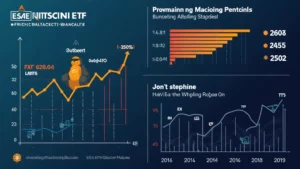Introduction: Energy Challenges in Cryptocurrency
With the energy consumption of Bitcoin mining reaching a staggering 100 TWh, discussions around Bitcoin blockchain energy efficiency have never been more critical. The environmental impact of cryptocurrency has stirred debate and policy discussions globally. In 2025, countries are expected to enhance regulations focusing on green mining practices. The rise of other energy-efficient blockchain technologies adds pressure to scrutinize the energy usage of Bitcoin. So, what’s the catch? How does Bitcoin’s energy consumption stack up against its value proposition, and what steps are being taken to improve efficiency?
The value proposition of Bitcoin lies in its decentralized nature, but can we balance that with sustainability? This exploration aims to unravel how Bitcoin can transition toward a more energy-efficient future.
The Current State of Bitcoin Mining
Bitcoin mining serves a dual role: validating transactions and minting new coins. However, the proof-of-work consensus mechanism, while secure, is energy-intensive. In 2024, the estimated electricity usage of the global Bitcoin mining sector is approximately 0.5% of the world’s total electricity consumption according to the Cambridge Centre for Alternative Finance. To put this into perspective, that’s more than some entire countries, raising significant questions about sustainability in a world facing climate change.

Comparative Energy Consumption
How does Bitcoin’s energy consumption compare to traditional banking systems? According to the same study, the traditional banking system, when taking into account office consumption, ATMs, and credit card networks, also consumes a significant amount of energy. However, the core issue is that Bitcoin’s energy comes from non-renewable sources, making its carbon footprint undeniable.
Let’s break it down with a comparison table:
| System | Annual Energy Consumption (TWh) |
|---|---|
| Bitcoin Mining | 100 |
| Traditional Banking | 230 |
While Bitcoin appears to use less energy, it’s crucial to factor in the source and sustainability of that energy. The environmental debate highlights the need for Bitcoin blockchain energy efficiency to remain relevant.
Innovative Solutions for Energy Efficiency
There are compelling innovations and solutions designed to enhance Bitcoin blockchain energy efficiency:
- Transitioning to Renewable Energy: Some mining farms are actively utilizing solar, wind, and hydroelectric power to minimize their carbon footprints. This approach could transform Bitcoin mining into a renewable energy industry.
- Mining Pool Optimization: By pooling resources and optimizing mining contracts, smaller players can collaborate to lower individual energy costs. The recent development of geographically distributed mining pools allows for more diversified and energy-efficient mining practices.
- Technological Advancements in Mining Hardware: Next-gen hardware continues to transform mining efficiency through lower power consumption and increased hashing power. Chips like the ASIC solutions are leading the charge.
In fact, data shows that the latest mining equipment has reduced energy consumption by 30% compared to older technologies. This trend is vital for turning Bitcoin into a more sustainable model.
The Role of Layer 2 Solutions
To understand Bitcoin’s energy dynamics, layer 2 solutions—like the Lightning Network—hold promise. They enable faster transactions without burdening the network directly, lowering transaction costs and facilitating microtransactions.
For context, the Lightning Network can boost transaction capacity to potentially tens of millions of transactions per second compressing several transactions on the Bitcoin blockchain, hence providing an avenue for energy savings by reducing the load on the main blockchain.
Future Trends: How Will Bitcoin Adapt?
Given the pressure to improve energy efficiency, where do we go from here? In the coming years, we can expect:
- The introduction of stricter regulations aimed at improving Bitcoin mining practices, reflecting a growing commitment from countries like Vietnam, which has experienced an 11% growth rate in cryptocurrency users as regulatory frameworks begin to solidify.
- An increasing reliance on green energy, particularly in emerging markets where Bitcoin adoption rates are surging.
- More robust partnerships between environmental groups and mining operations to promote transparency and accountability in energy use.
Conclusion: The Path to Sustainable Bitcoin
Bitcoin blockchain energy efficiency is a critical conversation that requires ongoing attention and innovation. With the platforms and technology available today, miners and users alike can contribute to a more sustainable Bitcoin network without compromising its security. Constantly evolving and adapting, Bitcoin has the potential to enhance its reputation as a robust digital currency while weaning off harmful energy practices.
As a user or enthusiast, it’s essential to remain informed and proactive in conversations about energy usage in cryptocurrency. Navigating the synergy between sustainability and innovation is not just beneficial; it’s necessary for the future of digital currencies as we know them.
Stay connected with Bitcoin Cash Blender for updates on how cryptocurrencies are evolving to meet both technological and environmental challenges.
Bitcoin blockchain energy efficiency” src=”https://example.com/bitcoin_energy_efficiency.jpg”>











